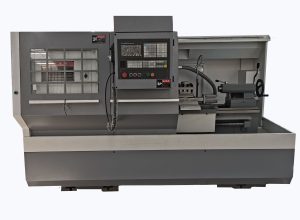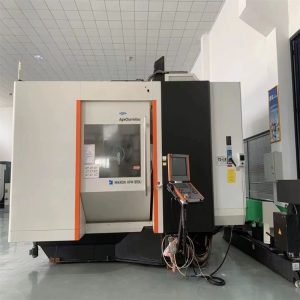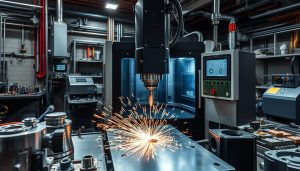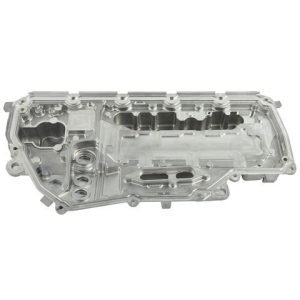Revolutionize your manufacturing processes with the power of laser welding. This comprehensive guide delves into the world of this precise and innovative joining technique, showcasing how it can elevate your production standards and deliver exceptional results. From the fundamental principles of laser welding to the latest advancements, we’ll explore the ins and outs of this transformative technology, equipping you with the knowledge to harness its full potential and drive your business towards greater efficiency and quality.
What is Laser Welding?
Laser welding is a cutting-edge technological process that utilizes the power of concentrated laser beams to join metals and thermoplastics with unparalleled precision and efficiency. This innovative technique has revolutionized modern manufacturing, offering a versatile and reliable solution for a wide range of industrial applications.
Overview of the Laser Welding Process
At the heart of the laser welding process is a high-energy laser beam, typically generated by a carbon dioxide (CO2) or a neodymium-doped yttrium aluminum garnet (Nd:YAG) laser. This laser beam is focused and directed onto the surfaces of the materials to be joined, creating an intense localized heat that melts the materials and fuses them together.
How Laser Beams Join Metals and Thermoplastics
The laser welding process works by precisely controlling the laser beam’s power, focus, and exposure time to create a secure and reliable joint between the materials. In the case of metal joining, the laser beam rapidly melts the metal surfaces, allowing them to fuse together. For thermoplastic welding, the laser beam heats and softens the plastic surfaces, enabling them to be bonded together seamlessly.
“Laser welding is a game-changing technology that has transformed the way we approach modern manufacturing, offering unparalleled precision, speed, and versatility.”
Types of Laser Welding Techniques
In the realm of precision manufacturing, laser welding has emerged as a game-changer, offering a wide range of techniques to meet the diverse needs of industries. From the versatile laser beam welding (LBW) to the specialized laser plastic welding, each method brings unique advantages to the table.
Laser Beam Welding (LBW) vs. Other Welding Methods
Laser beam welding (LBW) stands out from traditional welding techniques due to its remarkable precision and efficiency. Unlike conventional arc welding, LBW utilizes a highly concentrated beam of light to fuse metal components with exceptional accuracy and minimal distortion. This advanced process allows for the seamless joining of even the most intricate and delicate parts, making it a preferred choice in industries such as automotive and aerospace.
Key Features of Laser Plastic Welding
- Precise control over heat input and energy transfer
- Ability to weld thermoplastics without the need for adhesives or fasteners
- Rapid welding speeds, resulting in increased productivity
- Aesthetically pleasing, clean, and consistent weld seams
- Suitability for a wide range of plastic materials, including transparent and opaque varieties
Laser plastic welding has revolutionized the way manufacturers approach the assembly of plastic components. By harnessing the power of laser technology, this technique offers a versatile and efficient solution for joining thermoplastic parts, making it a game-changer in industries such as medical device manufacturing and electronics.
“Laser welding is a game-changer, offering unparalleled precision and efficiency in the world of manufacturing.”
Advantages of Laser Welding
In the rapidly evolving world of modern manufacturing, laser welding has emerged as a game-changer, offering unparalleled advantages that make it an essential tool for a wide range of industries. From its exceptional precision to its ability to minimize distortion, laser welding has revolutionized the way we approach the joining of materials, including dissimilar materials and thin metals.
High Precision and Minimal Distortion
One of the most notable advantages of laser welding is its unprecedented level of precision. The focused and highly concentrated energy of a laser beam allows for minimal heat input, resulting in a narrow heat-affected zone and a reduction in thermal distortion. This makes laser welding the preferred choice for applications where dimensional accuracy and aesthetic appeal are paramount, such as in the automotive and aerospace industries.
Ability to Weld Dissimilar Materials and Thin Metals
Another remarkable advantage of laser welding is its ability to join dissimilar materials with ease. Unlike traditional welding methods, laser welding can seamlessly combine metals, plastics, and even ceramics, opening up a world of possibilities for product design and innovation. Furthermore, laser welding excels in joining thin metals, where the controlled heat input and low distortion are crucial for maintaining structural integrity and aesthetic appeal.
These remarkable advantages of precision welding, minimal distortion, and the ability to weld dissimilar materials make laser welding an indispensable technology in modern manufacturing. As industries continue to demand higher quality, increased efficiency, and innovative solutions, laser welding stands out as a transformative and versatile joining method that is poised to shape the future of production.

Applications of Laser Welding
Laser welding has emerged as a versatile technology, transforming production processes across diverse industries. From the sleek designs of automotive and aerospace components to the precision-engineered medical devices and cutting-edge electronics, laser welding is revolutionizing the way we manufacture.
Automotive and Aerospace Industries
The automotive welding industry has embraced laser welding for its ability to precisely join complex metal structures with minimal distortion. Automakers leverage this technology to create lighter, stronger, and more fuel-efficient vehicles. Similarly, the aerospace welding sector utilizes laser welding to fabricate intricate aircraft parts and components, ensuring reliability and safety without compromising weight or design aesthetics.
Medical Device Manufacturing and Electronics
In the realm of medical device manufacturing, laser welding offers unparalleled precision, enabling the production of intricate, delicate medical instruments and implants. This technology also plays a crucial role in the fabrication of electronic components, where the ability to weld dissimilar materials and thin metals is paramount for creating compact, high-performance devices.
| Industry | Application of Laser Welding |
|---|---|
| Automotive | Joining complex metal structures, improving fuel efficiency |
| Aerospace | Fabricating intricate aircraft parts and components |
| Medical Devices | Producing precise, delicate medical instruments and implants |
| Electronics | Welding dissimilar materials and thin metals for compact devices |
As the versatility and precision of laser welding continue to expand, this technology is poised to revolutionize production processes across a wide range of industries, from automotive and aerospace to medical device manufacturing and electronics.

Laser Welding vs Traditional Welding Methods
As the manufacturing landscape evolves, more industries are recognizing the distinct advantages of laser welding over traditional welding techniques. This advanced joining process offers a range of benefits that are propelling its widespread adoption, particularly in sectors like automotive, aerospace, and electronics.
Speed, Cost, and Quality Comparison
When it comes to welding comparison, laser welding stands out for its unparalleled speed and efficiency. The focused energy of a laser beam allows for rapid, precise welds, significantly reducing production time and boosting overall cost-effective welding efforts. Additionally, the non-contact nature of laser welding minimizes material distortion, resulting in superior quality welding outcomes without the need for extensive post-processing.
| Metric | Laser Welding | Traditional Welding |
|---|---|---|
| Speed | Faster, up to 100 m/min | Slower, typically up to 10 m/min |
| Cost | Lower operating costs, less material waste | Higher operating costs, more material waste |
| Quality | Precise, minimal distortion, high-quality welds | Variable quality, potential for distortion and defects |
The table above showcases the key differences between laser welding and traditional welding methods, highlighting the speed, cost-effectiveness, and overall quality advantages of the laser-based approach.
“Laser welding has revolutionized the way we approach joining materials in various industries. The speed, precision, and cost-effectiveness of this technology make it a game-changer in the world of manufacturing.”
As the manufacturing landscape continues to evolve, the adoption of laser welding is poised to grow, offering businesses a more cost-effective welding and quality welding solution that can boost productivity and enhance the overall quality of their products.
Shixinproto’s Laser Welding Services for High-Precision Joints
At Shixinproto, we understand the importance of high-precision manufacturing and the critical role that laser welding plays in achieving superior product quality. As a leading provider of advanced laser welding solutions, we are committed to delivering customized services that cater to the unique needs of our clients across various industries.
Customized Laser Welding Solutions for Your Manufacturing Needs
Our team of laser welding experts is dedicated to helping you optimize your production processes and enhance the overall quality of your products. Whether you require precise joining of dissimilar materials, seamless assembly of thin metals, or advanced plastic welding, Shixinproto has the expertise and state-of-the-art technology to deliver tailored solutions that meet your specific requirements.
By partnering with Shixinproto, you can unlock the full potential of laser welding and experience the benefits of increased efficiency, reduced waste, and exceptional joint integrity. Our commitment to innovation and customer satisfaction ensures that you receive the highest level of service, enabling you to stay ahead of the competition and deliver exceptional products to your customers.
FAQ
What is laser welding?
How does laser welding work?
What are the different types of laser welding techniques?
- Laser Beam Welding (LBW): Used for joining metals.
- Laser Plastic Welding: Used for joining thermoplastics.
Each technique offers specific advantages and is tailored to the materials being joined.
What are the advantages of laser welding?
- High precision and minimal distortion
- Ability to weld dissimilar materials and thin metals
- Increased productivity
- Cost-effectiveness compared to traditional welding methods
Where is laser welding used?
- Automotive
- Aerospace
- Medical device manufacturing
- Electronics
Its precision and efficiency make it a preferred choice for critical applications where high-quality welds are essential.
How does laser welding compare to traditional welding methods?
- Higher speed
- Lower cost
- Improved weld quality
The narrow heat-affected zone and precise control of the laser beam result in welds with minimal distortion and superior mechanical properties.





